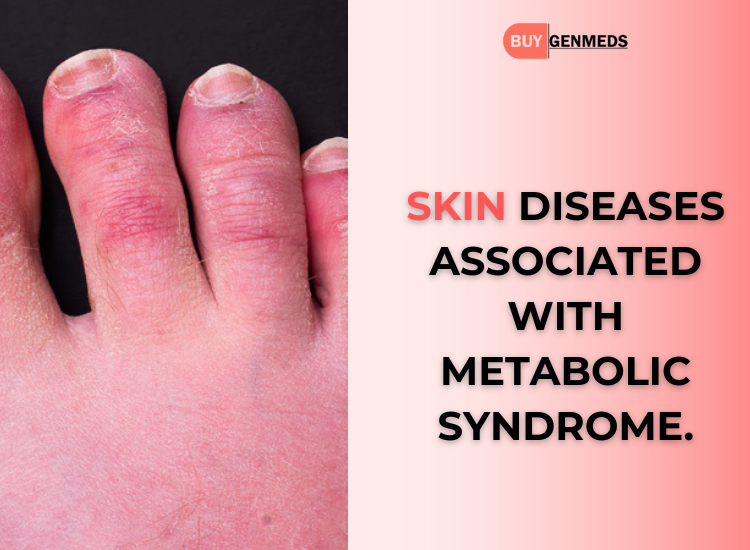While metabolic syndrome is primarily linked to cardiovascular and endocrine health, it also manifests in the skin. A variety of skin diseases are strongly associated with metabolic syndrome, providing vital clues to early diagnosis and intervention. A group of illnesses known as metabolic syndrome raise the risk of heart disease, stroke, and type 2 diabetes. Among these problems are hypertension, hyperglycemia, adiposity around the waist, and abnormally high triglyceride or cholesterol levels. This comprehensive overview explores how skin diseases interplay with metabolic syndrome, their underlying mechanisms, and their clinical implications. Metabolic syndrome, also known as “syndrome X” or “insulin resistance syndrome,” is characterized by a cluster of risk factors, often interconnected through obesity and insulin resistance. The criteria for diagnosing metabolic syndrome include having three or more of the following conditions: The significance of metabolic syndrome extends beyond the cardiovascular system. Several cuticle diseases are strongly linked to this syndrome, often serving as early markers of systemic issues. Acanthosis nigricans (AN) is one of the most recognizable cuticle conditions associated with metabolic syndrome. It presents as hyperpigmented, thickened, and velvety patches of skin, commonly found on the neck, armpits, and groin. AN is primarily associated with insulin resistance, which is a key component of metabolic syndrome. Psoriasis is a chronic inflammatory cuticle disease characterized by well-demarcated, red, scaly plaques, typically found on the elbows, knees, scalp, and lower back. While the exact cause of psoriasis is unknown, it is understood to involve an autoimmune component, where the immune system mistakenly attacks healthy skin cells. Hirsutism, or the excessive growth of coarse hair in areas where men typically grow hair (such as the face, chest, and back), is often a sign of an underlying endocrine disorder, such as polycystic ovary syndrome (PCOS). PCOS is a condition characterized by irregular menstrual cycles, ovarian cysts, and elevated levels of male hormones (androgens). Skin tags are benign, soft, and flesh-colored growths that typically occur in cuticle folds such as the neck, armpits, and groin. While they are generally harmless, an association has been observed between skin tags and metabolic syndrome. Xanthelasma refers to yellowish plaques that occur around the eyes, typically on the upper or lower eyelids. These plaques are composed of cholesterol deposits and are a common manifestation of lipid disorders. Individuals with metabolic syndrome are more susceptible to a variety of infections, including fungal and bacterial skin infections. This increased susceptibility is primarily due to insulin resistance, obesity, and impaired immune function. Non-alcoholic fatty liver disease (NAFLD) is a common liver disorder in individuals with metabolic syndrome, characterized by the accumulation of fat in liver cells. While the primary impact of NAFLD is on the liver, it can also have dermatological manifestations. Hyperpigmentation, or the darkening of the cuticle in certain areas, is a common dermatological concern, particularly in individuals with metabolic syndrome. This includes conditions like post-inflammatory hyperpigmentation, where dark spots appear after skin injury or inflammation. Understanding Metabolic Syndrome
Skin Diseases Associated with Metabolic Syndrome
Acanthosis Nigricans
Psoriasis
Hirsutism and Polycystic Ovary Syndrome (PCOS)
Skin Tags (Acrochordons)
Xanthelasma
Cutaneous Infections
Non-Alcoholic Fatty Liver Disease (NAFLD)-Related Skin Manifestations
Hyperpigmentation and Post-Inflammatory Hyperpigmentation
Skin Diseases Associated With Metabolic Syndrome.

30
Sep

